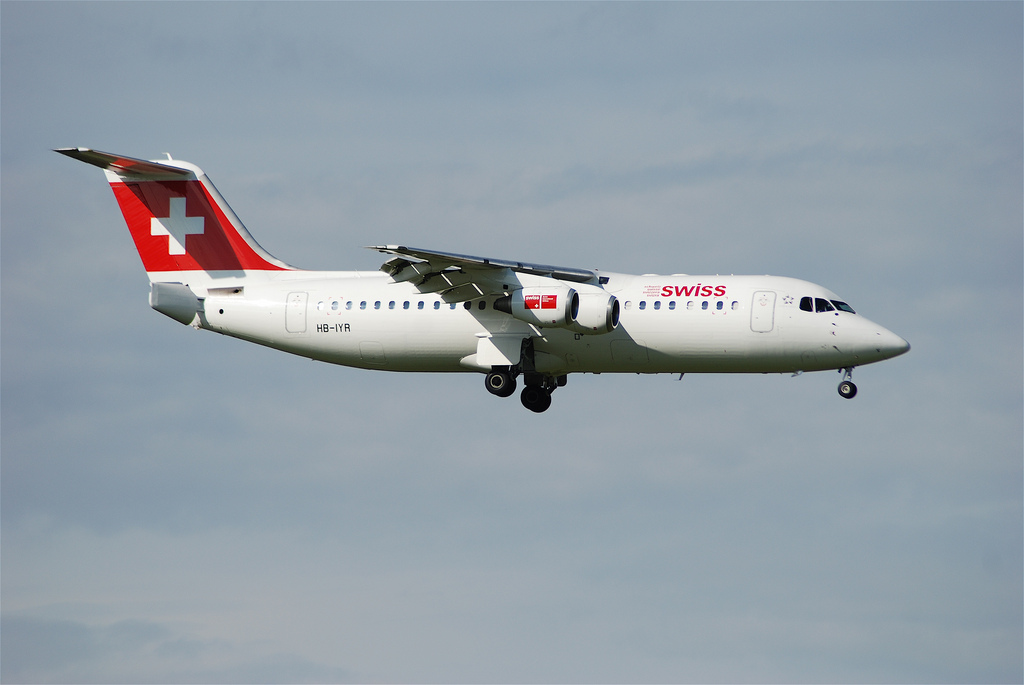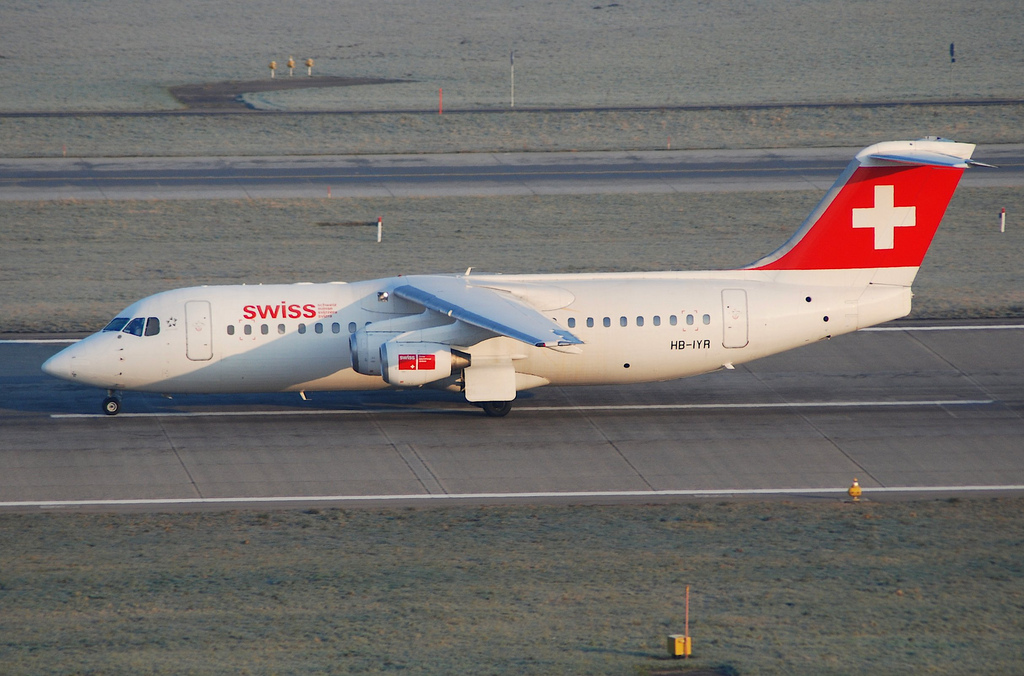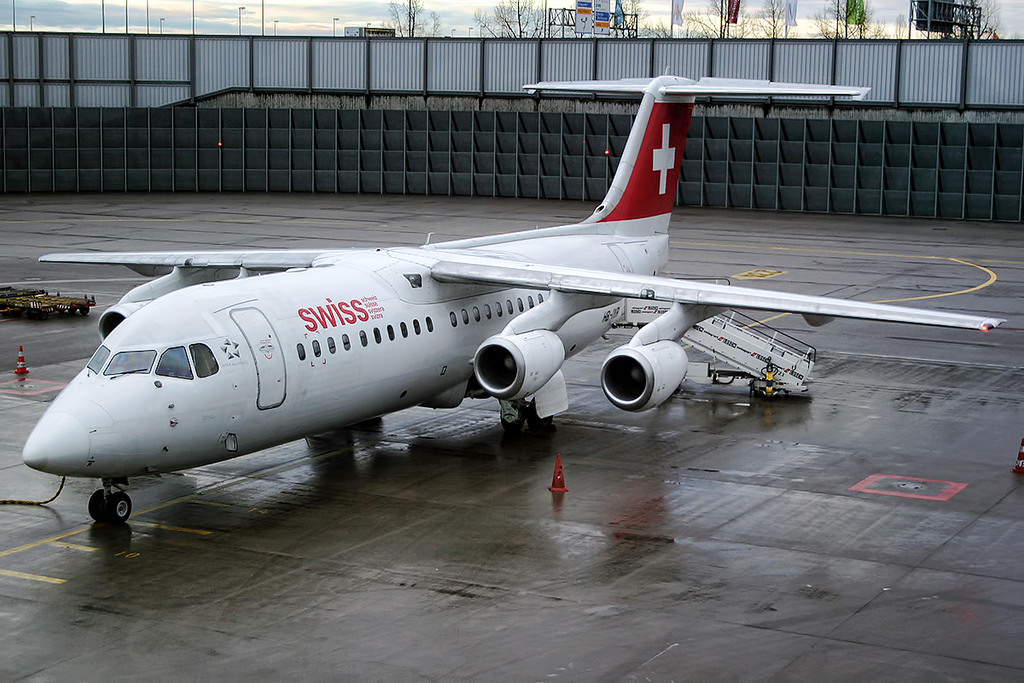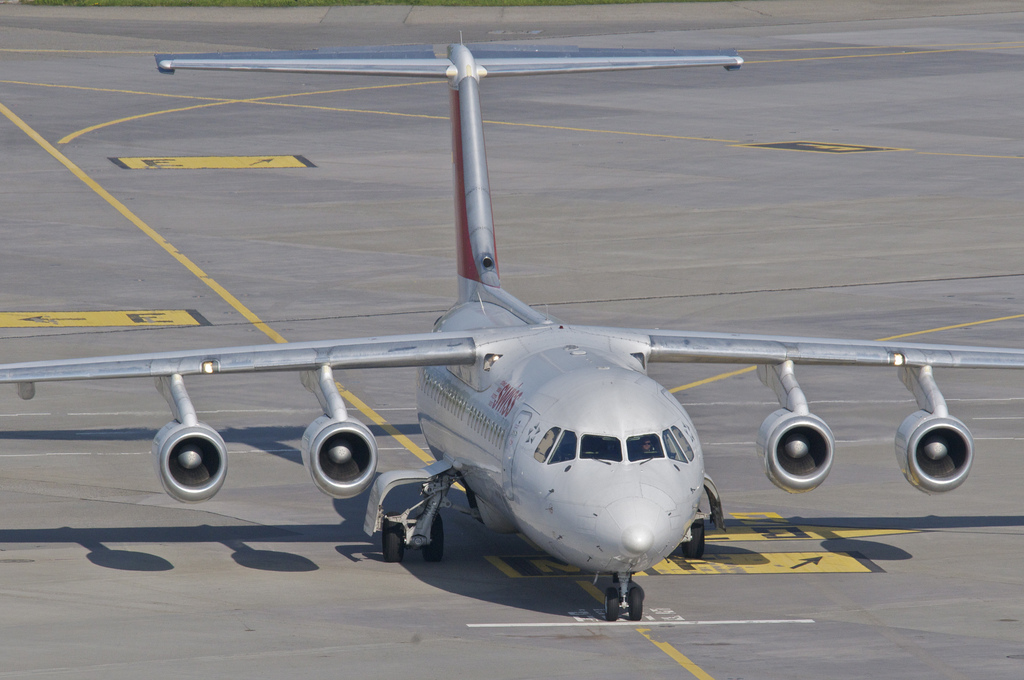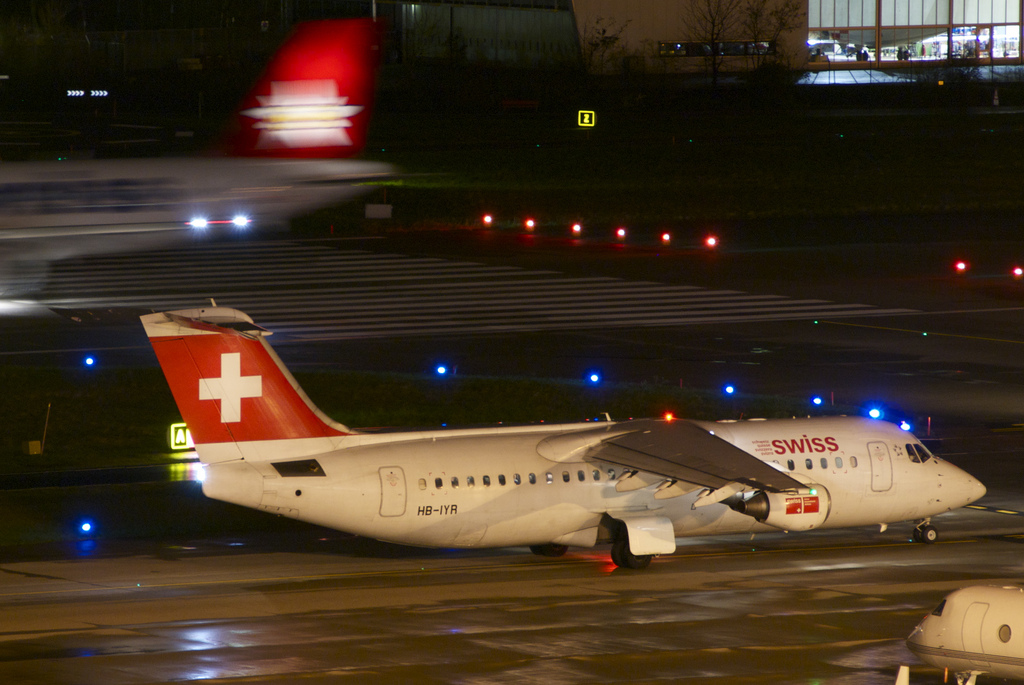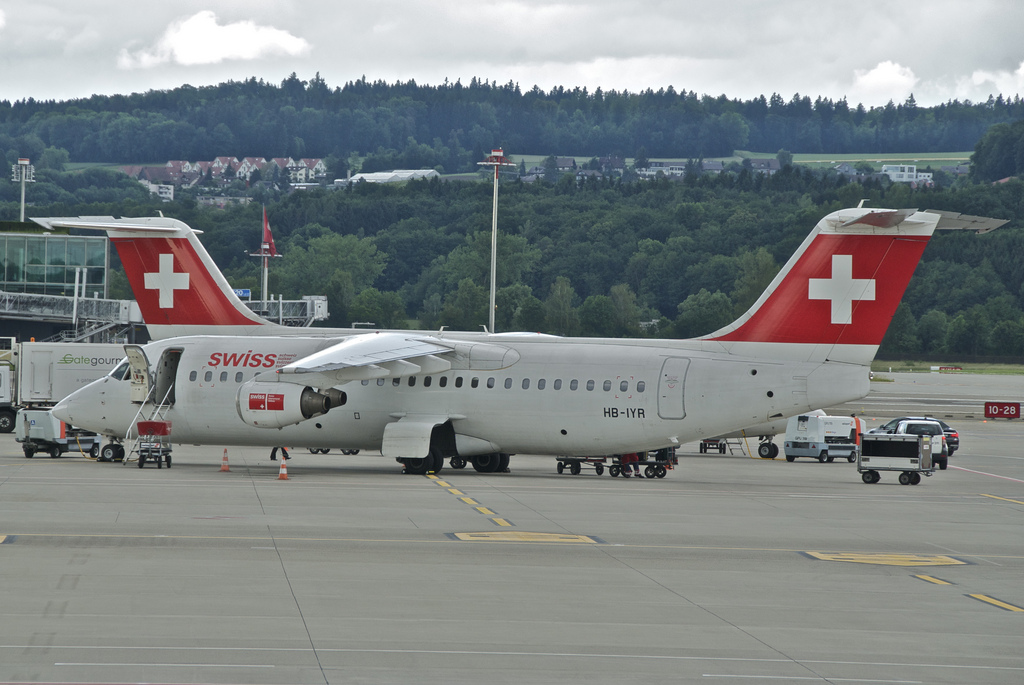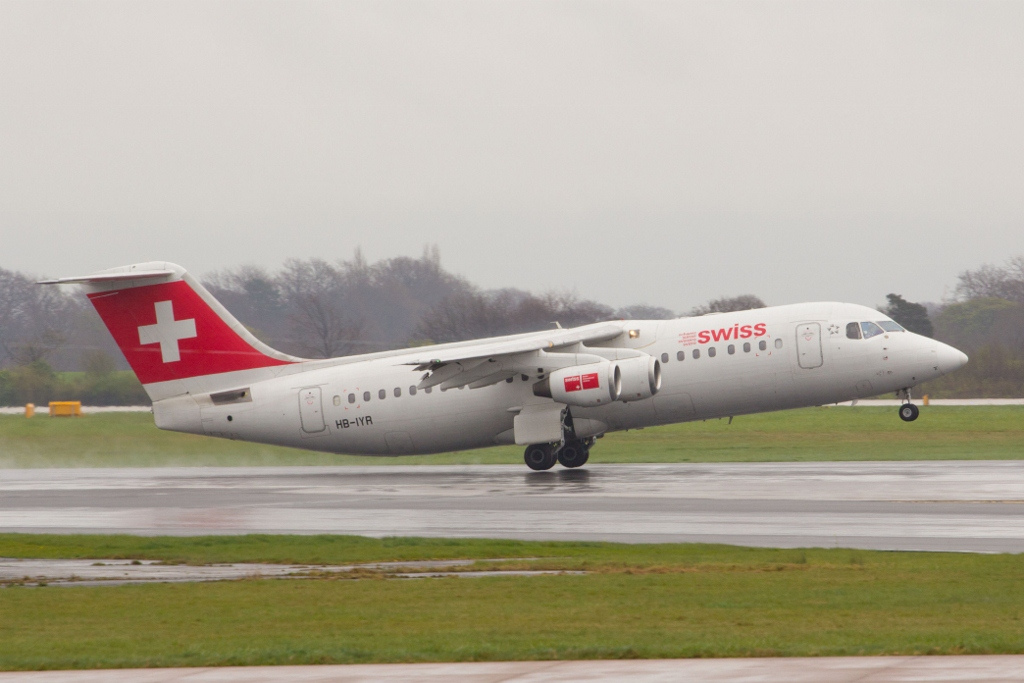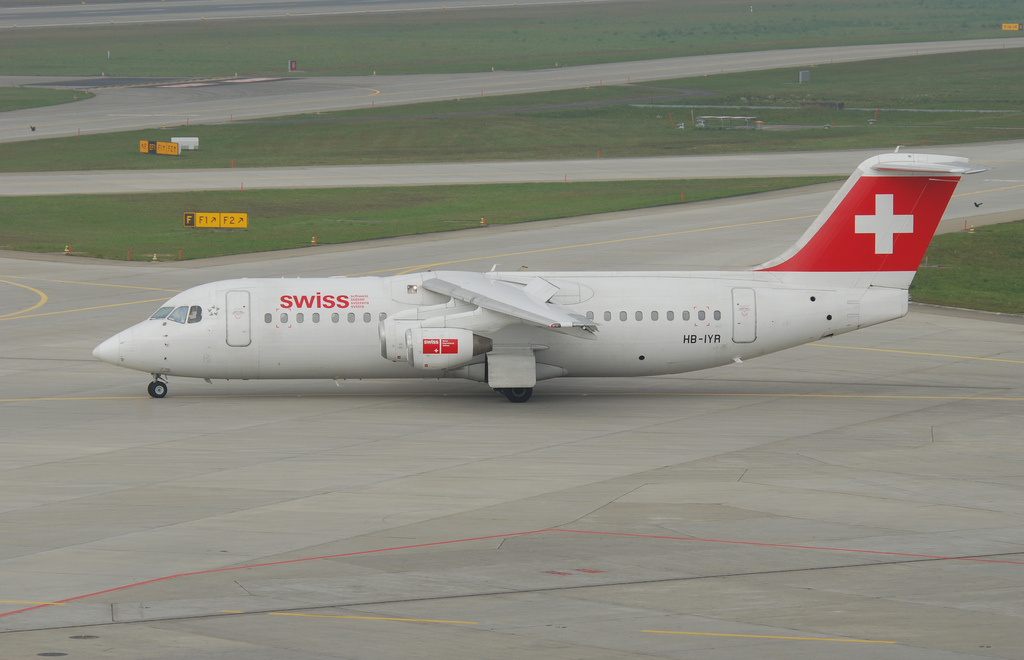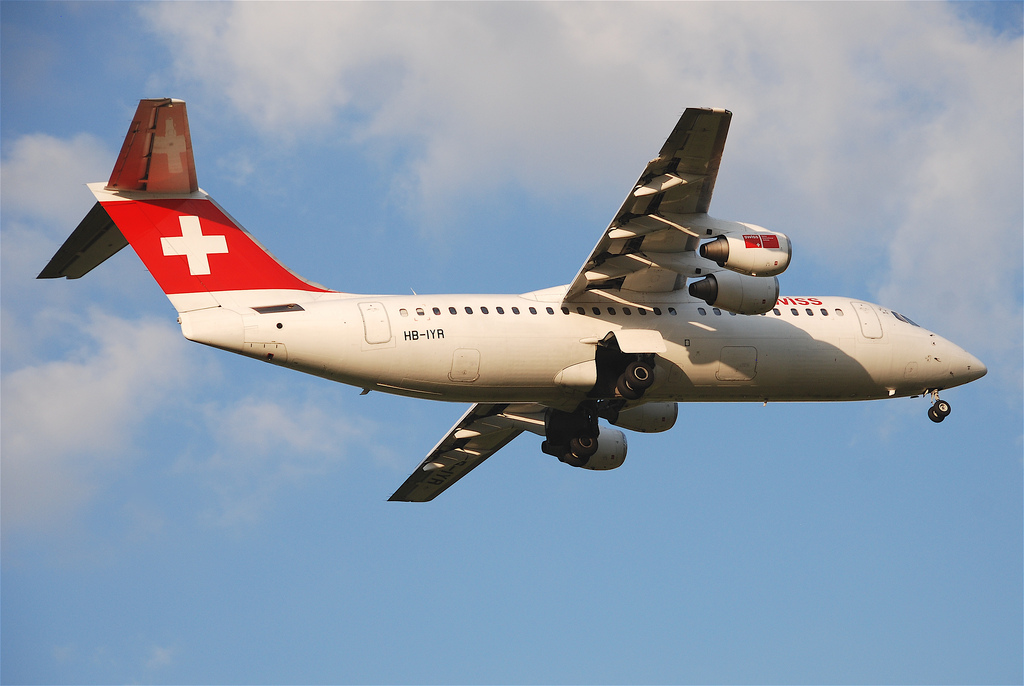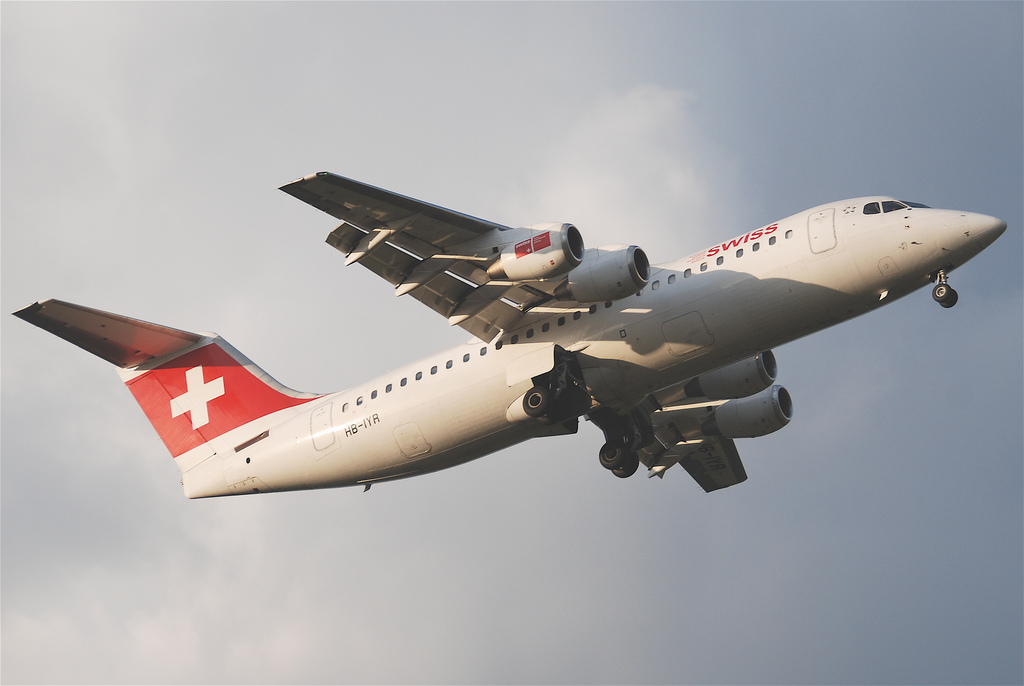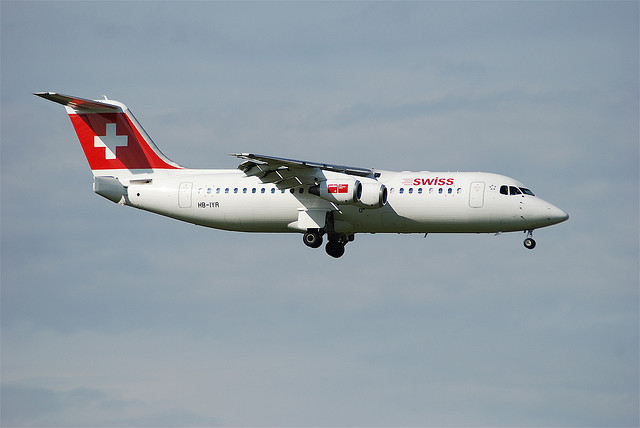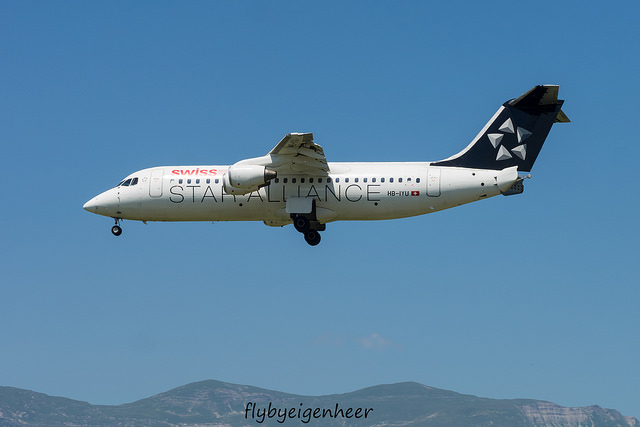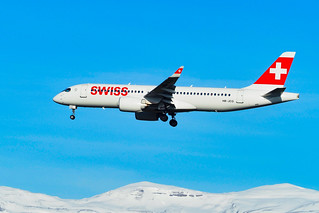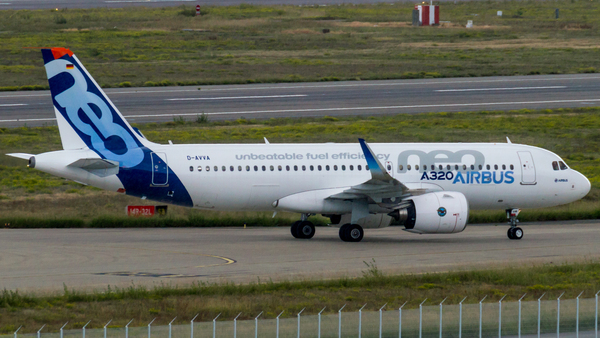Swiss RJ1H at Zurich on Oct 24th 2016, oil fumes in cockpit
Last Update: January 24, 2018 / 16:18:54 GMT/Zulu time
Incident Facts
Date of incident
Oct 24, 2016
Classification
Incident
Airline
Swiss
Flight number
LX-425
Departure
Birmingham, United Kingdom
Destination
Zurich, Switzerland
Aircraft Registration
HB-IYR
Aircraft Type
AVRO RJ-100 Avroliner
ICAO Type Designator
RJ1H
Switzerland's SUST rated the occurrence a serious incident and opened an investigation. There were no injuries and no damage to the aircraft.
On Jan 23rd 2018 the SUST released their summary report concluding:
The cause for the development of the smell in the cockpit could not be ascertained with certainty. During two inspections using an aerotracer, however, evidence emerged that the development of the smell could have been caused by the bleed air from engine 2. Changing this engine was therefore logical and justified. Subsequently, no other comparable cases occurred with this aircraft.
The SUST analysed: "The use of oxygen masks by the flight crew was safety-conscious. The sending of an urgency message requesting priority landing was appropriate for the situation."
The SUST reported:
In Birmingham, at 17:40 UTC, the scheduled pushback of the aircraft for the return flight to Zurich took place with the auxiliary power unit (APU) running. Two pilots, two cabin crew members and 66 passengers were on board. After the start-up of the four engines, the flight crew activated the APU’s bleed air and the two air conditioning packs (PACKs) in order to ventilate the cabin (see short description of the pressure ventilation system and defroster).
Whilst taxiing to the take-off runway, the cabin crew manager (maître de cabine) entered the cockpit to inform the flight crew that the cabin was ready for take-off. In the course of this, he and the flight crew noticed a distinct oil fume smell in the cockpit. The flight crew subsequently checked whether a change from APU bleed air to ENG bleed air would clear the fume smell. As this was the case, they decided to deactivate the APU and take off without cabin ventilation.
At 17:48 UTC, the aircraft took off in Birmingham. At an altitude of 1,500 ft above ground, the engine power was reduced from take-off to climb and the ENG bleed air and both air conditioning packs were activated. As expected by the flight crew, the build-up of a smell failed to occur, meaning the climb and cruise flight could proceed without incident.
The descent towards Zurich took place with the defroster activated. At an approximate altitude of Flight Level (FL) 80, the defroster was switched off. About one minute later, the flight crew once again detected a distinct oil fume smell and subsequently put on their oxygen masks. At 19:29:06 UTC, they sent an urgency message (Pan, pan), informed air traffic control about the use of oxygen masks and requested approach priority.
The approach to runway 28 took place using radar vectoring and the flight crew made no further adjustments to the aircraft’s pneumatic system. Nothing out of the ordinary could be detected in the cabin, meaning that from the perspective of the passengers and the cabin crew, the approach proceeded as normal. The aircraft landed on runway 28 at 19:36 UTC.
Immediately after reaching the parking position and opening the doors of the aircraft, a cockpit air sample was taken and analysed by the fire service. After the passengers had left the aircraft in the normal way, the levels of oxygen and carbon dioxide in the blood of the crew members were also measured on location. The results of all of the tests were normal.
The SUST described maintenance activity:
The maintenance company carried out all inspections of different components as stipulated for cases such as this. The four engines and the APU were also examined using a borescope. No hard findings which could have explained the oil fume smell were produced by any of these inspections; as part of these inspections a hydraulic oil leak was in fact found and repaired, however, it was not assessed to be the root cause.
After a renewed inspection of the air quality using an aerotracer1, oil fume particles could be detected in the air as soon as the bleed air from engine 2 was used. It should be noted that the bleed air from engine 22 feeds the left-hand air conditioning pack, which is primarily responsible for the air supply in the cockpit (see illustration 1). As there was also evidence of fume particles after the incident on 1st October 2016 under the same conditions (see previous incidents), the maintenance company decided to change engine 2.
As the aircraft type AVRO 146-RJ100 is being retired by the aviation company, engine 2 was taken into storage and the company did not carry out more in-depth inspections of the engine. Therefore, it cannot be stated with any certainty whether engine 2 was the root cause of the abnormal smell. On subsequent flights with this specific aircraft no other such odour developments were perceptible.
The SUST reported that two more fume events had occurred on Oct 1st 2016 and Oct 21st 2016, in both cases no urgency was declared and the crews did not use their oxygen masks, the SUST did not investigate these occurrences. The SUST summarized maintenance activity following those events:
On 1st October 2016, on approach to Zurich Airport (LSZH), the flight crew noticed an abnormal smell which lasted for approximately one minute and that they compared to the smell of old socks. In addition, they described the air quality throughout the entire flight from Paris (LFPG) to Zurich as unusual and unpleasant.
The inspections carried out by the maintenance company included an air quality inspection using an aerotracer, which showed evidence of oil fume particles in the supply of bleed air from engine 2. A preliminary inspection of engine 2 showed an oil leak on bearing number 9. However, after opening the bearing housing, engine specialists could not confirm this. Subsequently a compressor wash of engine 2 was carried out. Then tests with all possible air and air conditioning configurations were carried out, once again using an aerotracer. All of these tests showed no anomalies. Before the aircraft was returned to operation, an additional inspection flight took place; this was also uneventful.
On 21st October 2016, after take-off in Dresden (EDDC), the flight crew switched the air conditioning from APU bleed air to ENG bleed air and immediately noticed a strong smell in the cockpit for approximately three minutes which they compared to the smell of old socks. After switching to fresh air mode3 the situation returned to normal. No abnormal odour was detected in the cabin. The landing in Zurich (LSZH) took place without incident.
The inspections by the maintenance company included the following, which proved inconclusive:
- Inspection of all air and air conditioning configurations possible using an aerotracer
- Borescope inspection of engines 1 and 2, and the APU
- Search for external leaks
Furthermore, PACK 1 was replaced as its air cycle machine fell outside of the tolerance with regards to torque. In addition, as a preventative measure, the cockpit and cabin filters were changed.
The inspections for both incidents displayed no clear findings that the smell could have been traced back to. Furthermore, neither was an urgency message sent, nor were the oxygen masks used by the flight crews. In both cases STSB therefore decided not to carry out an investigation.
Aircraft Registration Data
Incident Facts
Date of incident
Oct 24, 2016
Classification
Incident
Airline
Swiss
Flight number
LX-425
Departure
Birmingham, United Kingdom
Destination
Zurich, Switzerland
Aircraft Registration
HB-IYR
Aircraft Type
AVRO RJ-100 Avroliner
ICAO Type Designator
RJ1H
This article is published under license from Avherald.com. © of text by Avherald.com.
Article source
You can read 2 more free articles without a subscription.
Subscribe now and continue reading without any limits!
Read unlimited articles and receive our daily update briefing. Gain better insights into what is happening in commercial aviation safety.
Send tip
Support AeroInside by sending a small tip amount.
Related articles
Swiss RJ1H at Prague on Sep 28th 2014, hydraulic leak
A Swiss Avro RJ-100, registration HB-IYR performing flight LX-1487 from Prague (Czech Republic) to Zurich (Switzerland), was climbing out of Prague's…
Swiss RJ1H enroute on Sep 3rd 2016, fumes in cockpit and cabin
A Swiss Global Airlines Avro RJ-100, registration HB-IYU performing flight LX-2813 from Geneva to Zurich (Switzerland) with 88 passengers and 4 crew,…
Swiss BCS3 near Zurich on Jul 24th 2022, loss of cabin pressure
A Swiss Bombardier C-Series CS-300, registration HB-JCG performing positioning flight LX-5141 from Ibiza,SP (Spain) to Zurich (Switzerland) with just…
Swiss BCS3 near Paris on Oct 15th 2019, engine shut down in flight after uncontained failure
A Swiss International Airlines Bombardier C-Series CS-300, registration HB-JCC performing flight LX-359 from London Heathrow,EN (UK) to Geneva…
Swiss BCS3 near Geneva on Sep 16th 2019, uncontained engine failure
A Swiss International Airlines Bombardier C-Series CS-300, registration HB-JCA performing flight LX-358 from Geneva to London Heathrow,EN (UK) with…
Swiss BCS1 near Geneva on Feb 22nd 2022, brakes problem
A Swiss Bombardier C-Series CS-100, registration HB-JBE performing flight LX-1082 from Geneva (Switzerland) to Frankfurt/Main (Germany), was enroute…
Newest articles
ASL UK AT72 at East Midlands on Nov 14th 2025, tyre and runway damage on landing
An ASL Airlines UK Avions de Transport Regional ATR-72-212A freighter, registration G-OASB performing flight ABV-108 from Guernsey,CI to East…
TAP A20N at Lisbon on Nov 14th 2025, lightning strike
A TAP Air Portugal Airbus A320-200N, registration CS-TVP performing flight TP-862 from Lisbon (Portugal) to Venice (Italy), was climbing out of…
Subscribe today
Are you researching aviation incidents? Get access to AeroInside Insights, unlimited read access and receive the daily newsletter.
Pick your plan and subscribePartner

ELITE Simulation Solutions is a leading global provider of Flight Simulation Training Devices, IFR training software as well as flight controls and related services. Find out more.
SafetyScan Pro provides streamlined access to thousands of aviation accident reports. Tailored for your safety management efforts. Book your demo today
AeroInside Blog
Popular aircraft
Airbus A320Boeing 737-800
Boeing 737-800 MAX
Popular airlines
American AirlinesUnited
Delta
Air Canada
Lufthansa
British Airways
